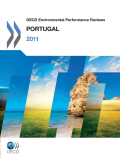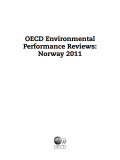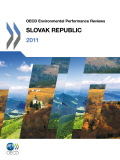
OECD Environmental Performance Reviews provide independent assessments of countries’ progress towards their environmental policy objectives. Reviews promote peer learning, enhance government accountability, and provide targeted recommendations aimed at improving countries’ environmental performance, individually and collectively. They are supported by a broad range of economic and environmental data and evidence-based analysis. Each cycle of Environmental Performance Reviews covers all OECD member countries and selected partner countries.
This report is the third Environmental Performance Review of France. It evaluates progress towards sustainable development and green growth, with a focus on energy transition and biodiversity.

This report presents the OECD review of Portugal’s environmental policy performance for 2011. It finds that environmental policies have been consolidated and strengthened since the last review in 2001, but that meeting the post-Kyoto targets for reducing greenhouse gas emissions will be challenging. With energy and climate policies being closely related, the report points out that with less than 50% of hydro capacity currently being exploited, there is potential for further development in that area. It also describes the challenges regarding coastal zone and marine management.
Topics covered in the report include greening growth, implementation of environmental policies , international co-operation , climate change, waste management and the 3Rs (reduce, reuse, recycle), and nature and biodiversity.
Further information about the Environmental Performance Review programme is available on line via this link.

This report presents the third OECD review of Norway’s environmental policy performance. Previous reviews were published in 2001 and 1993. Topics covered in this report include greening growth, implementation of environmental policies, international cooperation, climate change, waste management and the 3Rs (reduce, reuse, recycle), and nature and biodiversity.

This 2011 review of Israel's environmental conditions and policies evaluates progress in sustainable development, improving natural resource management, integrating environmental and economic policies, and strengthening international co-operation. This report is the first OECD review of Israel’s environmental policy performance.

This 2011 review of the Slovak Republic's environmental policies and programmes covers recent developments, greening growth, implementation of environmental policies, climate change and energy, agriculture and the environment and international cooperation.
